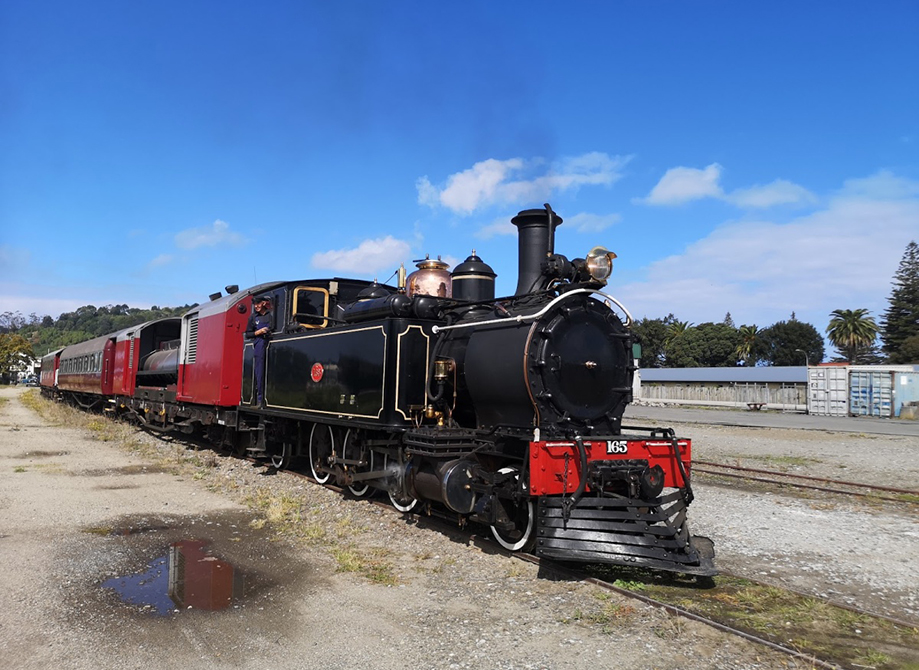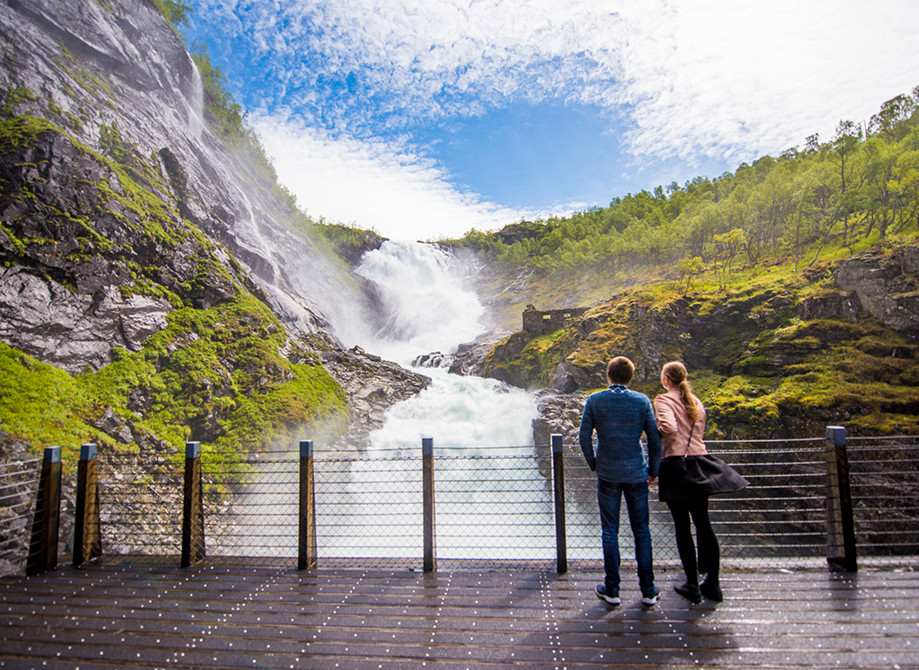Southern Norway is a captivating region known for its breathtaking landscapes and rich cultural heritage. I had the privilege of exploring this area, which offers a unique blend of natural beauty and historical intrigue. From majestic fjords to charming coastal towns, here’s a detailed account of my journey through Southern Norway, showcasing the remarkable destinations and experiences I encountered.
1. Henrik Ibsen Museum: Immersing in Norwegian Literary Legacy
A Journey into Ibsen’s World
My visit to the Henrik Ibsen Museum in Skien was a profound experience that allowed me to immerse myself in the world of one of Norway’s greatest literary figures. Henrik Ibsen, renowned for his groundbreaking plays and dramatic storytelling, spent his formative years in this charming town. The museum, situated in Ibsen’s childhood home, is a tribute to his life and works, offering a rare glimpse into the early influences that shaped his writing.
Exploring the Museum
The museum is housed in a well-preserved 19th-century building, which itself is a piece of history. As I stepped inside, I was greeted by a sense of stepping back in time. The interior is meticulously curated, showcasing original manuscripts, personal letters, and various artifacts that belonged to Ibsen. These exhibits provide a tangible connection to the writer, illustrating his creative journey and the personal experiences that inspired his plays.
Highlights of the Visit
One of the highlights of my visit was the guided tour, which offered detailed insights into Ibsen’s creative process. The guide’s commentary was both informative and engaging, shedding light on Ibsen’s innovative approaches to drama and the social issues he tackled. I learned about the historical context of his plays, including the societal changes and personal struggles that influenced his work. The tour also included anecdotes from Ibsen’s life, adding a personal touch to the historical facts.
Personal Reflection
Walking through the museum, I felt a deep connection to Ibsen’s legacy. The exhibits brought his stories to life, and the intimate setting of his childhood home provided a unique perspective on his early influences. This visit deepened my appreciation for Ibsen’s contributions to literature and left me with a greater understanding of the man behind the plays.
2. Heddal Stave Church: A Journey Back in Time
Discovering Norway’s Medieval Architecture
Next on my itinerary was the Heddal Stave Church, a true architectural gem and one of Norway’s oldest stave churches. Located in the picturesque village of Heddal, this church dates back to the early 13th century and is renowned for its intricate wooden craftsmanship and historical significance.
Exploring the Church
As I approached Heddal Stave Church, its striking appearance immediately caught my eye. The church is characterized by its towering spires and elaborate wooden carvings, showcasing the skill and artistry of medieval Norwegian builders. The dark wood of the church contrasts beautifully with the surrounding landscape, creating a visually stunning setting.
Interior Experience
Inside the church, the atmosphere was both serene and awe-inspiring. The interior is adorned with medieval artwork and carvings that reflect the religious and cultural heritage of the period. The rich, dark wood and the detailed craftsmanship create a sense of stepping back into Norway’s medieval past. The church’s historical and spiritual significance was palpable, and I took a moment to reflect on the centuries of history that have unfolded within these walls.
Personal Reflection
Visiting Heddal Stave Church was like taking a journey through time. The architectural beauty and historical depth of the church provided a unique glimpse into Norway’s past, and I left with a profound appreciation for the country’s medieval heritage.
3. The Gammelbanen Railway: A Nostalgic Ride

A Scenic Train Journey
For a touch of nostalgia and a unique perspective on Southern Norway, I embarked on a journey aboard the Gammelbanen Railway. This historic railway, established in the late 19th century, offers a charming and leisurely ride through some of Norway’s most scenic landscapes.
Experience on the Train
The Gammelbanen Railway is a delightful throwback to a bygone era, with its vintage trains and classic design. As the train chugged along the tracks, I was treated to breathtaking views of rolling hills, serene lakes, and quaint villages. The slow pace of the journey allowed me to fully appreciate the natural beauty of the region and the tranquility of the countryside.
Unique Perspective
The railway’s historical significance added an extra layer of interest to the trip. The journey provided a unique opportunity to explore Norway’s transportation history and see the landscape from a different vantage point. The leisurely pace and scenic views made the ride a memorable highlight of my trip.
Personal Reflection
Riding the Gammelbanen Railway was a nostalgic and enriching experience. It offered a beautiful way to connect with Norway’s natural beauty and historical past, and it remains one of my fondest memories from the trip.
4. The Royal Silver Mine: Unearthing Norway’s Mining History
The Royal Silver Mine in Fredrikstad was another fascinating stop on my journey. Once a vital source of silver for Norway, this historic mine has been transformed into a comprehensive museum. Exploring the underground tunnels and learning about the mining process provided a tangible sense of the hard labor and innovation involved in Norway’s mining industry. The exhibits, which include mining tools, historical photographs, and detailed explanations of the mining techniques, offered a deep understanding of the mine’s impact on the region’s economy and history.
5. Oscarborg Fortress: A Fortress with a History
Oscarborg Fortress, located in Drøbak, is a key historical site that played a significant role in Norway’s military history. Built in the early 19th century, the fortress was designed to protect Oslofjord from naval attacks. As I toured the fortress, I was struck by its strategic location and well-preserved structures. The views from the fortress offered a panoramic vista of the surrounding fjord, while the exhibits detailed the fortress’s role in various historical conflicts. The visit provided a compelling insight into Norway’s defensive strategies and military heritage.
6. The Whaling Museum: Understanding Whaling’s Impact
In Larvik, I visited the Whaling Museum, which delves into the history of whaling and its significance to Norway’s economy. The museum’s extensive collection includes whaling ship models, hunting equipment, and historical photographs. Through interactive exhibits and informative displays, I learned about the whaling industry’s impact on Norway’s maritime history and its environmental consequences. The museum also highlighted the cultural aspects of whaling, offering a comprehensive overview of this controversial practice.
7. The Cathedral: Heart of the City
During my travels, I explored several cathedrals throughout Southern Norway. These cathedrals are not only places of worship but also architectural marvels that reflect the artistic and cultural heritage of their respective cities. The intricate designs, beautiful stained glass windows, and serene atmospheres of these cathedrals provided a glimpse into the spiritual life of the region. Attending a service or simply taking a moment to appreciate the architectural details, I felt a deep connection to the cities’ historical and religious roots.
8. The Larvik Museum: Discovering Local History and Culture
The Larvik Museum was an excellent venue for delving into the local history and culture of the area. The museum’s exhibits cover a range of topics, including the city’s early settlers, traditional crafts, and industrial development. Walking through the museum, I gained a greater appreciation for Larvik’s historical evolution and the everyday lives of its residents. The museum’s engaging displays and informative presentations made for an enriching cultural experience.

9. The Løkken Waterfall: Nature’s Majestic Wonder
The Løkken Waterfall is one of Southern Norway’s most stunning natural attractions. Standing at the base of the waterfall, I was mesmerized by its sheer height and the powerful cascade of water plunging over the cliff. The surrounding landscape, with its lush vegetation and pristine environment, enhanced the beauty of this natural wonder. The hike to the waterfall offered spectacular views and a chance to immerse myself in the tranquil splendor of Norway’s wilderness.
10. The Traffic Garden: A City Oasis
The Traffic Garden in Bergen is a delightful green space that offers a peaceful retreat from the urban hustle. This beautifully landscaped garden features a variety of plant species, small fountains, and walking paths. Strolling through the garden, I enjoyed the fresh air and serene environment, taking a moment to relax and unwind. The Traffic Garden provides a perfect escape from the city’s busy streets and a chance to appreciate the beauty of urban green spaces.
Southern Norway is a treasure trove of natural wonders and cultural heritage. From the Henrik Ibsen Museum to the Løkken Waterfall, each destination offers a unique glimpse into the region’s rich history and breathtaking landscapes. Whether you’re a history enthusiast or a nature lover, Southern Norway promises a memorable travel experience. I hope my insights and experiences inspire you to explore this captivating region and discover its many treasures for yourself.
